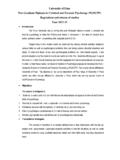Transcription of Crime Scene Reconstruction and Analysis - NE-IAI
1 Crime Scene Reconstruction @Larry Barksdale, 8-12-05 Tuesday, January 8, 13 The End Product All that we do in an investigation ultimately leads to a believable theory of an event. This is the product of Reconstruction . It may result in prosecution, it may result in other disposition, or may rest as the best that could be done in the investigation. The responding, interviewing, evidence gathering and interpretation, paradigm application, hypotheses formation and testing, follow-up, chance discovery, and intuitive insight contribute to the Reconstruction , which directly produces the theory of the Crime . Osterburg and Ward offer that a criminal investigation is a Reconstruction of a past event ( ).Tuesday, January 8, 13Dr. Henry Lee Dr. Lee writes that Reconstruction is different from re-enactment, re-creation, and criminal profiling. (Lee, et. al., 272). Reconstruction is more comprehensive, more robust, and more directed to final problem resolution than criminal investigative Analysis (formerly called profiling), re-enactment, and re-creation.
2 Tuesday, January 8, 13 Crime Scene Reconstruction and Analysis The use of scientific methods, physical evidence, deductive and inductive reasoning, and their interrelationships to gain explicit knowledge of the series of events that surround the commission of a Crime . - Association For Crime Scene , January 8, 13 Rynearson s Definition Crime Reconstruction is the application of common sense reasoning in conjunction with forensic science to interpret evidence as it resides at the Scene . These are then combined with a knowledge of the likely behaviors of participants under known conditions. As reason, forensic science and likely behaviors interact, the investigator develops a Reconstruction which depicts motive, movement, sequence and timing to the participants in a Crime and sometimes infers the motive of the Joseph Rynerason, Evidence and Crime Scene Reconstruction , pp. , January 8, 13 Henry Lee, et. al., Henry Lee s Crime Scene Handbook.
3 Crime Scene Reconstruction is the process of determining or eliminating the events and actions that occurred at the Crime Scene through Analysis of the Crime Scene pattern, the location and position of the physical evidence, and the laboratory examination of the physical evidence. Reconstruction not only involves scientific Scene Analysis , interpretation of the Scene pattern evidence and laboratory examination of physical evidence, but also involves systematic study of related information and the logical formulation of a theory. - p. , January 8, 13 How to Go About A Reconstruction There are many approaches. We will look at a few from some popular consultants and author. A starting point is to consider the concept of , January 8, 13 The Concept of Consilience The Consilience of Inductions takes place when an Induction, obtained from one class of facts, coincides with an Induction, obtained from another different class. This Consilience is a test of the truth of the Theory in which it occurs.
4 William Whewell, The Philosophy of the Inductive Sciences, as quoted in Edward O. Wilson, Consilience, The Unity of Knowledge, Consilience: jumping together of knowledge by linking of facts and fact-based theory across disciplines to create a common groundwork of explanation (Wilson. 8.)Tuesday, January 8, 13 The Consilient Approach to Reconstruction Understands the approaches provided in the literature of Crime Scene Reconstruction . Incorporates the knowledge and information from multiple disciplines: psychology, archaeology, social sciences, creative arts, forensic sciences, linguistics, and so forth. Recognizes the role of logical reasoning, experience, intuition, and creativity in individual and teamwork settings. Applies a systematic methodology towards providing an explanation of the totality of a criminal act or , January 8, 13 Concepts and Techniques of Logical Reasoning and Systematic Methodology. Induction: specific to general reasoning.
5 Deduction: general to specific reasoning. Abduction: basically general to specific the best explanation (Peirce) Fuzzy Logic: terms are not clear, what is tall? Heisenberg s Uncertainty Principle limits to measurement. Semiotics: recognition of signs. Chaos Theory: system identification with initial sensitivities, changes, and reformation. Fallibility mistaken knowledge (Peirce) Falsifiability- possible to define circumstances, if they occurred, show a proposition false (Popper) Tarski s proposition- there is no Absolute , January 8, 13 Concepts From Other Disciplines Archaeology human behavior is patterned, artifacts reflect behavior;spatially distinct activity areas and features (Connor and Scott, 2001). Psychology- deviant behavior. Management- decision making. Philosophy limits, meaning, logic. Anthropology- cultural behavior. Linguistics- statement Analysis and textual Analysis . Biology/Chemistry evidence Analysis and probable associations, consilience.
6 Literature/Art/Music possible words, serialization. Medicine- wound/disease Analysis . Literature/Movies-relationships, possibilities. Political Science- Crime definitions, policy, power relationships. Mathematics- iteration, modeling. Engineering-consilience,reverse thinking. Chemistry/Biology-evidence Analysis . Semiotics Analysis of signs. Law the code for behavior. Criminal Justice procedures and structure of organizations. Sociology group , January 8, 13 The Rynearson Method Learn backgrounds of all participants and the history of the Crime Scene . Address all first impressions. Identify the critical elements of the Crime : search for anything which establishes motion, position and action of participants. Determine the Weapons of tools. See the motive of the Crime . Seek any associative evidence. Was anything taken from the Scene or left behind by the perpetrator? Seek alternatives to the most obvious Reconstruction . No Reconstruction can be dismissed until it has been proven by the evidence to be impossible (pp.)
7 117-118). If evidence contradicts the theory, or raises new questions, the investigator must alter the Reconstruction to incorporate all the evidence and clues (p. 113)Tuesday, January 8, 13 What Could Be Proven to be Impossible?Tuesday, January 8, 13It Is Not A Failure to Go Back Investigators of all types must put ego s on the hat rack when doing Crime Scene investigations. The key to all investigations, including Crime Scene investigations and reconstructions is to get it right. To get it right might be re-working the theory, going back to the Scene even if it means getting another search warrant, going against popular or political opinion, re-interviewing a witness, and many other seemingly bruising , January 8, 13 Event Analysis See Gardner, Chapter 8, The Role of Crime Scene Analysis and Reconstruction . Event Analysis can be thought of as an adaptation of the ANACAPA Sciences link Analysis method Ross Gardner suggests using an event Analysis model for Crime Scene Reconstruction .
8 In the Gardner model all the information gathering, evidence collection, and information interpretation are a part of the information that defines the events and event segments. Rynearson (114-120) includes an event Analysis scheme and the orientation of story boarding for putting together theorized , January 8, 13 Event Analysis It can be applied to a series of events, a specific event, or a part of an event. Gardner breaks down events into event segments. It is a heuristic. It is an aid in organizing information and theorizing about what is known and what I not know about the investigation. The most method is to put information in chronological order from beginning to end. A timeline is very similar to an event Analysis . An event Analysis might include hypothesized interpretation of evidence and information, and the relationships between information and , January 8, 13 Event Analysis : A Conceptual Adaptation From the Literature Pre-Event: suspect preparation, surveillance, stalking, gathering of tools and weapons, preparation of disguise, determining transportation, environmental adaptation.
9 Approach: surprise, con, blitz, surprise, opportunistic, covert. Overt Entry: forced, non-forced, invitation, % difficulty, concealed point of entry. Pre-Contact: preparation of tools and equipment, environmental adaptation, eavesdropping, personal preparation. Contact: victim/environment control, suspect commands or admonitions, victim behavior, environment alteration. Post-Contact: Environment alteration, staging, clean-up disposal, thefts, messaging, victim release. Exit: Point of exit, hurried, over/covert, casual, deceptive manipulations. Post-Exit: transportation method, resting location, concealed location, evidence disposition, suspect behavior, victim behavior. Post-Contact: Prowling, anonymous messages, drive-bys, , January 8, 13 What Are the Events? Pre-Event. Approach. Entry. Pre-Contact. Contact. Post-Contact. Exit. Post-Exit. , January 8, 13 The Bevel Model Bevel proposes re-enactment as a critical aspect of any Reconstruction .
10 The re-enactment is not only a quality control and research technique, but a method that enhances the chance discovery. This is a re-enactment in which actors walk through in an effort to duplicate the behaviors of the events. Another feature of the Bevel model is the use of the Scientific Method to test hypotheses. This involves Research Hypotheses and Investigative , January 8, 13An Integration From Bevel(Using the Scientific Method) Define problem. Form hypothesis. Collect data. Predict results. Perform experiments. Observe results. Form conclusion. Form a new hypothesis, if necessary. -Bevel, Journal of Forensic method?-entry by entry = pry marks, broken for pry marks, evidence of not by by unsecured door.**repeat process to point of workable theory**Tuesday, January 8, 13 The Scientific Method Define the Question whose hat. Gather Information and Resources assign officers to neighborhood canvass. Form Hypothesis the hat is the suspects.



